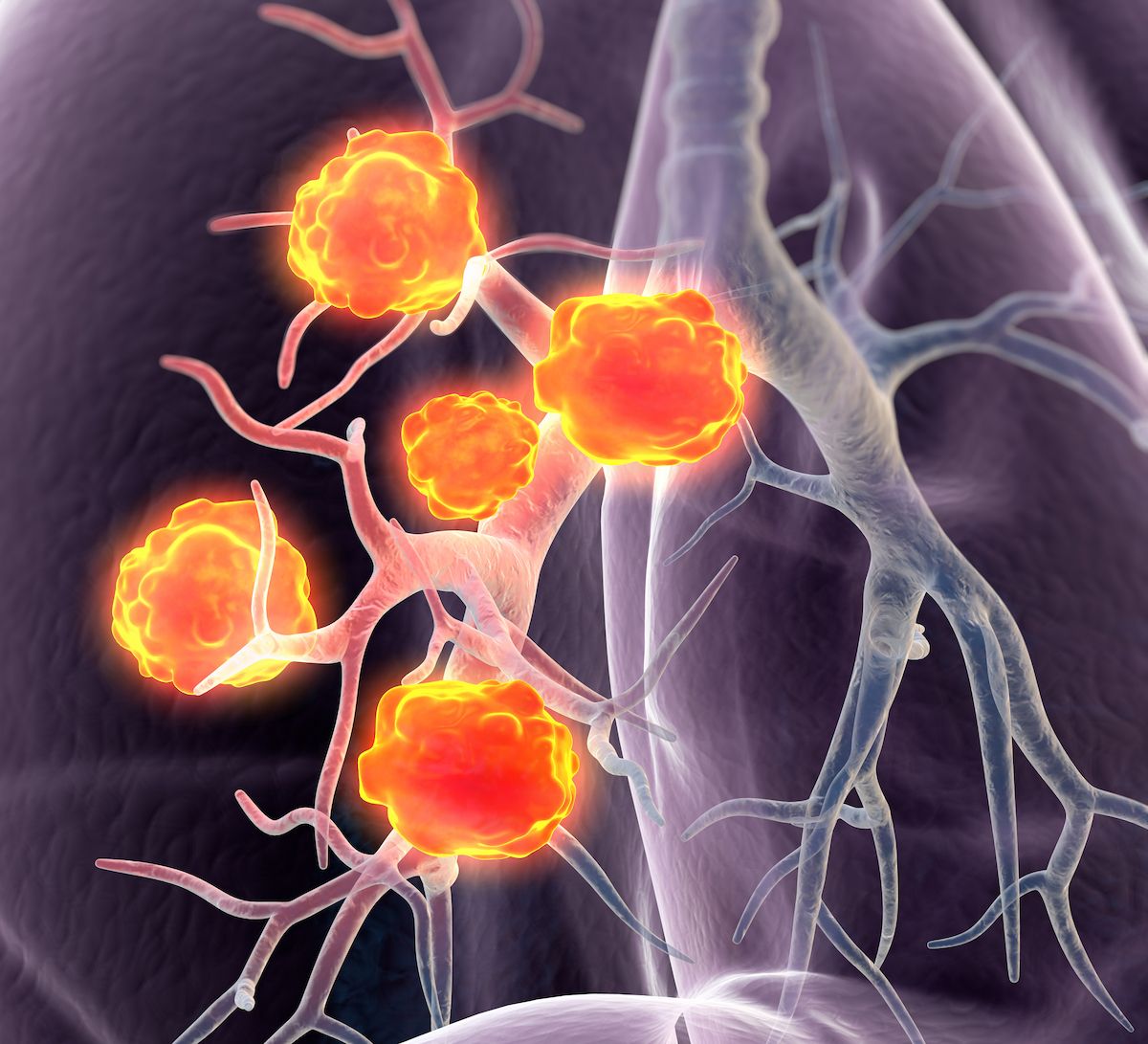Atezolizumab Plus Bevacizumab Shows Potential in TMB-H Nonsquamous NSCLC
Findings from the phase 2 TELMA trial suggest that atezolizumab plus bevacizumab yields robust, long-lasting outcomes for patients with metastatic nonsquamous tumor mutational burden–high non–small cell lung cancer.
Atezolizumab (Tecentriq) and bevacizumab (Avastin) combination therapy resulted in a robust 12-month progression-free survival (PFS) and produced a favorable safety profile among patients with metastatic nonsquamous non–small cell lung cancer (NSCLC) with high tumor mutational burden (TMB-H), according to data from the phase 2 TELMA trial (NCT03836066).
Atezolizumab plus bevacizumab produced an overall response rate of 42.1% among patients with metastatic nonsquamous non–small cell lung cancer in the phase 2 TELMA trial.

The 12-month PFS rate among patients treated with atezolizumab and bevacizumab was 51.3% (95% CI, 34.2%-66.0%) and at 18 months it was 31.1% (95% CI, 16.9%-46.4%). Additionally, the median PFS was 13.0 months (95% CI, 7.9-18.0).
In terms of overall survival (OS), the 6-month rate was 86.6% (95% CI, 70.8%-94.2%), the 12-month rate was 72.0% (95% CI, 54.1%-83.9%), and the 18-month rate was 62.3% (95% CI, 43.8%-76.2%). The median OS was not reached at the time of the analysis.
Investigators of the multicenter, single-arm, open-label phase 2 TELMA trial assessed the clinical benefits and safety of atezolizumab plus bevacizumab as a treatment for TMB-H advanced nonsquamous NSCLC. Patients received 1200 mg of atezolizumab and 15 mg/kg of bevacizumab by intravenous infusion on day 1 of each 21-day cycle until disease progression, unacceptable adverse effects (AEs), patient withdrawal, investigator decision, or death.
The primary end point of the study was PFS and secondary end points included investigator-assessed overall response rate (ORR), duration of response (DOR), time to response, OS, safety and tolerability, and ORR and PFS based on PD-L1 expression.
Patients 18 years and older with histologically or cytologically confirmed, treatment-naïve, stage IIIB to IV nonsquamous NSCLC were eligible to enroll on the trial. Additional inclusion criteria included having measurable disease per RECIST v1.1 criteria, an ECOG performance status of 0 or 1, adequate hematologic and organ function, and a high to intermediate TMB, defined as 10 mut/Mb or more based on archival tissue samples.
Among the 38 evaluable patients included in the trial, 73.7% were male and the mean age was 63.7 years (standard deviation, 8.3). Additionally, 55.3% of patients were former smokers of a year or more, 57.9% had an ECOG performance status of 1, 92.1% had adenocarcinoma histology, and 47.4% had stage IVB disease.
Investigators reported an ORR of 42.1% (n = 16/38), which included 16 partial responses and a disease control rate of 78.9%. The median time to response was 2.8 months (interquartile range [IQR], 2.8-3.58), and the median DOR was 11.7 months (range, 3.57-22.4). Additionally, 50.0% (n = 8/16) of responses were ongoing at the time of data cutoff.
Of 30 patients with evaluable PD-L1 tumor proportion scores, investigators observed no relationship between PD-L1 status and ORR, PFS, or OS. Investigators noted that patients with an objective response had a median TMB of 15.5 mut/Mb (IQR, 11.5-24.5) compared with 13 mut/Mb (IQR, 10.5-15.0) in those who experienced progressive or stable disease (P = .03).
Common grade 1/2 AEs related to atezolizumab included fatigue (15.8%), pruritus (15.8%), anorexia (13.2%), and diarrhea (10.5%). High-grade AEs included alanine aminotransferase (ALT) increase, arthralgia, arthritis, diarrhea, and serum amylase increase in 1 patient each. Common grade 1/2 AEs related to bevacizumab included hypertension (26.3%), proteinuria (10.5%), anorexia (7.9%), and diarrhea (7.9%). High-grade AEs included hypertension (5.3%) and ALT increase (2.6%).
Treatment discontinuation due to AEs occurred among 5.3% of patients for atezolizumab and 7.9% of patients for bevacizumab.
Reference
Provencio M, Ortega AL, Coves-Sarto J, et al. Atezolizumab Plus bevacizumab as first-line treatment for patients with metastatic nonsquamous non–small cell lung cancer with high tumor mutation burden: a nonrandomized controlled trial. JAMA Oncol. Published online December 15, 2022. doi:10.1001/jamaoncol.2022.5959